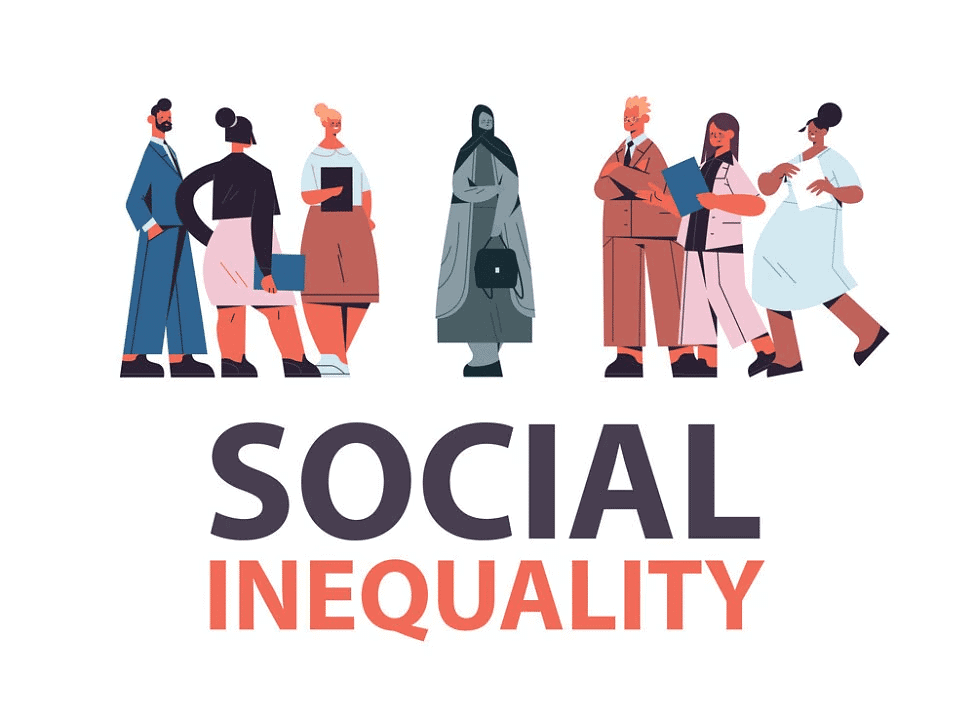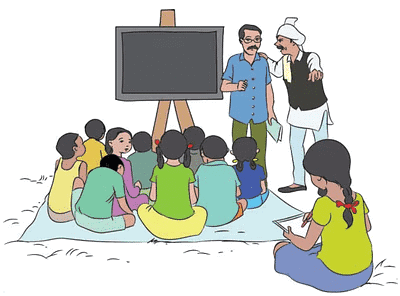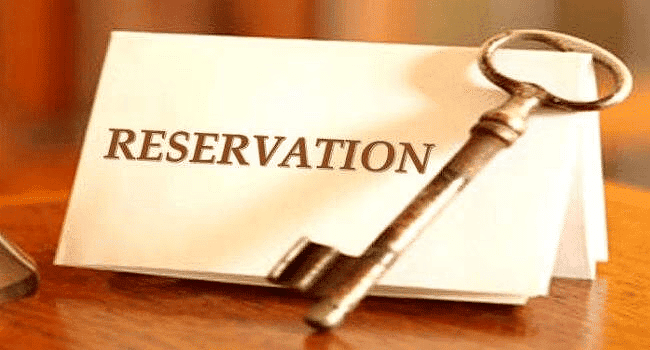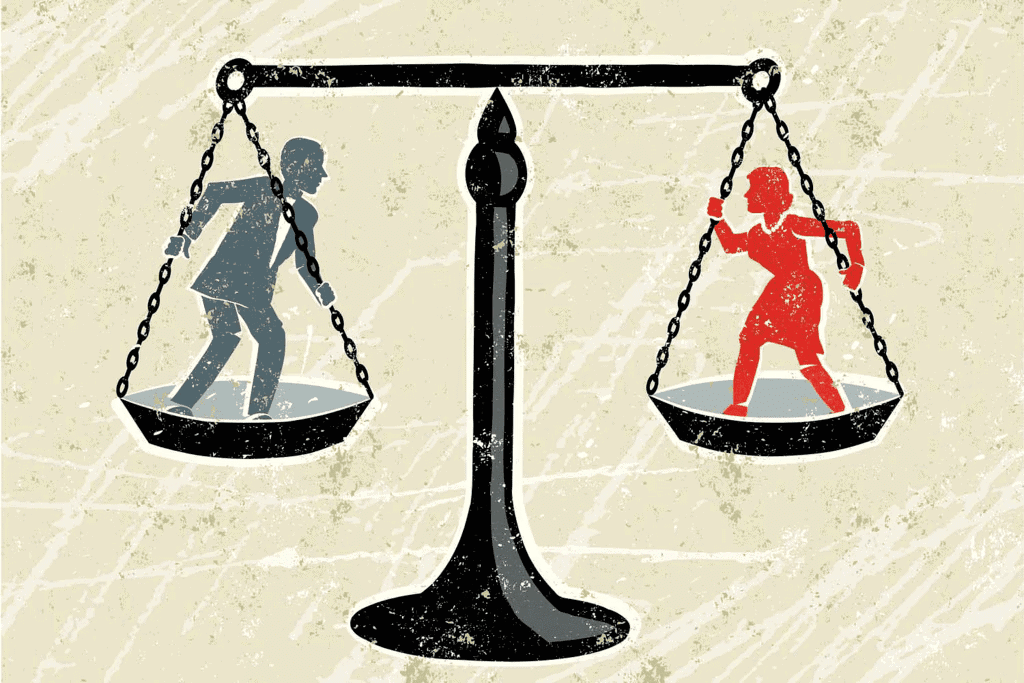NCERT Summary: Pattern of Social Inequality and Exclusion (Class 12) | Old & New NCERTs for IAS Preparation (Must Read) - UPSC PDF Download
Introduction
Social inequality and exclusion are ubiquitous phenomena that can seem natural and inevitable due to their prevalence. They are often perceived as earned or justified in some way. However, not everyone has the same opportunities and life chances. The oppressed castes have comparatively fewer opportunities and chances.
What is Social about Social Inequality and Exclusion?
- Social inequality and exclusion are characterized by their impact on groups rather than individuals, making them social phenomena.
- Although social and economic inequality are often directly related, social inequality is distinct from economic inequality because it is not solely determined by economic factors.
- Social inequalities are not random or haphazard, but rather structured and systematic, indicating a clear pattern in their distribution and impact.
Social Inequality

- Social inequality refers to the unequal distribution of social resources among different groups of people.
- Social resources can include things like education, health care, housing, and social support networks.
- While some social inequality can be attributed to differences in skills and efforts among individuals, not all social inequality is a result of such factors.
- Other factors such as social status, race, gender, and other forms of social identity can also play a significant role in determining access to social resources.
- These factors are often beyond an individual's control and can result in systemic and long-standing social inequalities.
Social resources
Across all cultures, certain individuals often have greater access to valuable resources such as money, property, education, health, and power. These social assets can be categorized into three distinct types of capital.
- The first type is financial capital, which includes tangible assets and income.
- The second type is cultural capital, which includes factors such as rank and educational background.
- The third type is social capital, which is based on social networks and affiliations.
These three types of capital frequently overlap and can be interchangeable. For example, an individual with financial resources may use their wealth to acquire a prestigious education, thereby accumulating cultural or educational capital. Similarly, an individual with powerful family connections or social networks may use their social capital to access valuable knowledge or job opportunities.
Social Stratification
The sociological term for a ranking system based on hierarchy among different groups of individuals within a community is social stratification. This hierarchy influences people's identities, experiences, relationships with others, and access to opportunities.
Three fundamental ideas that help to explain social stratification:
- Social stratification refers to the hierarchical ranking system of different groups in a society, which is not based solely on personal preferences. It unfairly allocates social resources across these groups and shapes people's identities, experiences, relationships, and access to opportunities.
- Social stratification has persisted across generations and is closely tied to family and the intergenerational transfer of social resources. Social status is assigned, and endogamy supports this aspect of social inequality by restricting marriage within the same caste.
- Ideological or belief patterns form the basis for social stratification, and for a system of social stratification to endure across generations, it must be perceived as fair or inevitable. The caste system, for example, is justified by the notion of purity and defilement, with Brahmins being considered the most superior and Dalits the most inferior based on their place of birth and occupation.
People experience discrimination due to:
Prejudices
- Prejudices can be described as pre-existing attitudes or actions held by one group towards another. The term "pre-judgement" literally means an opinion formed before encountering the subject and without considering any relevant evidence.
- Prejudices can be either positive or negative, although the term is often used to describe negative attitudes.
- Stereotypes, which are established and rigid characterizations of a group of people, often give rise to prejudices.
- Prejudices are often based on hearsay rather than actual evidence and are resistant to change even when faced with new information.
Stereotypes
- The foundation of stereotypes is prejudices.
- Stereotypes give a fixed and rigid view of individuals.
- Stereotypes are frequently used to describe women, racial and ethnic groups.
- A group is viewed as homogeneous, for example, Rajputs are believed to be brave, and men are not supposed to cry while women are.
Discrimination
- Discrimination involves practices that exclude members of a group from available opportunities.
- Examples of discrimination include turning down a person for a job based on their gender or religion.
- Discrimination may not be evident or overt, making it difficult to prove.
- Prejudice may not be the primary driving force behind discriminatory behavior.
Social Exclusion
- The concept of "social exclusion" refers to situations where individuals or groups are prevented from fully participating in society.
- It encompasses a range of issues that limit the opportunities available to certain people or groups, making it difficult for them to access basic necessities such as housing, food, clothing, and transportation, as well as education and healthcare.
- Social exclusion is a systemic issue that stems from the underlying social structure, rather than being the result of chance.
- It is important to note that social exclusion is involuntary, meaning that individuals are excluded regardless of their own preferences.
- It is sometimes argued that social exclusion is justified by the fact that excluded individuals do not show interest in participating. However, this argument is not always valid, particularly when exclusion prevents access to important resources.
- Exclusion can also lead to a reaction on the part of those who are excluded, causing them to give up on seeking inclusion. For example, some higher caste Hindus forbid members of lower castes, especially Dalits, from entering temples, which can lead to a sense of exclusion and resentment.
Caste and Tribe – Systems Justifying and Perpetuating Inequality
The Caste System as a Discriminatory System

- The caste system in India legitimizes and enforces discriminatory practices against people born into particular castes.
- Historically, the caste system classified people by their occupation and status, with each caste associated with a specific occupation and social rank.
- Individuals born into a caste were typically bound to the occupation of that caste, with no choice to change.
- Social and economic status were supposed to be separate, but in practice, high castes were usually of high economic status, and low castes were of low economic status.
- In modern times, the link between caste and occupation has become less rigid, and it is easier for individuals to change occupations.
- Despite some changes, the correlation between caste and economic status remains stable at the macro level.
- Privileged sections of society tend to be overwhelmingly 'upper' caste, while disadvantaged sections are dominated by 'lower' castes.
- The proportion of the population living in poverty or affluence varies greatly across caste groups.
- Caste continues to affect the life chances of Indians in the twenty-first century, despite efforts to reduce its influence.
Untouchability
- ‘Untouchability’ is an extreme and particularly vicious aspect of the caste system that prescribes stringent social sanctions against members of castes located at the bottom of the purity-pollution scale.
- The ‘untouchable’ castes are outside the caste hierarchy and are considered so ‘impure’ that their mere touch severely pollutes members of all other castes, leading to terrible punishment for the former and forcing the latter to perform elaborate purification rituals.
- In many regions of India, particularly in the south, notions of ‘distance pollution’ existed, where even the mere presence or shadow of an 'untouchable' person was considered polluting.
- The institution of ‘untouchability’ refers to a broader set of social sanctions beyond just the avoidance or prohibition of physical contact.
- The three main dimensions of untouchability – exclusion, humiliation-subordination, and exploitation – are all equally important in defining the phenomenon.
- ‘Touchable’ low castes are also subjected to subordination and exploitation but do not suffer the extreme forms of exclusion reserved for ‘untouchables’.
- Dalits experience unique forms of exclusion, such as being prohibited from sharing drinking water sources or participating in collective religious worship, social ceremonies, and festivals.
- Untouchability is almost always associated with economic exploitation, commonly through forced, unpaid (or under-paid) labor or the confiscation of property.
- Untouchability is a pan-Indian phenomenon, though its specific forms and intensity vary across regions and socio-historical contexts.
- The so-called ‘untouchables’ have been referred to by many derogatory and pejorative names over the centuries.
- Mahatma Gandhi popularized the term ‘Harijan’ (literally, children of God) in the 1930s to counter the pejorative charge carried by caste names.
- The ex-untouchable communities and their leaders coined the term ‘Dalit’, now the generally accepted term, which means ‘downtrodden’ and conveys the sense of an oppressed people.
- Though not coined by Dr. Ambedkar, the term ‘Dalit’ resonates with his philosophy and the movement for empowerment that he led.
- The term ‘Dalit’ gained wide currency during the caste riots in Mumbai in the early 1970s, particularly through the Dalit Panthers, a radical group that used the term to assert their identity in their struggle for rights and dignity.
State and Non-State Initiatives Addressing Caste and Tribe Discrimination
- The Indian state has had special programmes for Scheduled Tribes and Scheduled Castes since before Independence.
- The ‘Schedules’ listing these castes and tribes deserving of special treatment were drawn up in 1935 by the British Indian government.
- After Independence, these policies continued and expanded, including special programmes for Other Backward Classes (OBCs) since the early 1990s.
- ‘Reservations’ are the most important state initiative, setting aside places for Scheduled Castes and Tribes in public life, including legislatures, government jobs, and educational institutions.

- The proportion of reserved seats is based on their percentage in the population, while for OBCs, the proportion is decided differently.
- Numerous laws have been passed to end, prohibit, and punish caste discrimination, particularly untouchability.
- Key laws include the Caste Disabilities Removal Act of 1850, the 93rd Amendment (2006), and the Scheduled Castes and Scheduled Tribes (Prevention of Atrocities) Act of 1989.
- Despite legislation, cases of discrimination and atrocities against Dalits and adivasis continue today.
- State action alone cannot ensure social change; Dalits have been active in political, agitational, and cultural fronts.
- Dalit leaders like Jyotiba Phule, Periyar, and Ambedkar and political organisations like the Bahujan Samaj Party have significantly advanced Dalit political assertion.
The Other Backward Classes

- Untouchability was the most visible and comprehensive form of social discrimination.
- There were other low-status castes subjected to varying levels of discrimination short of untouchability.
- These included service and artisanal castes occupying the lower rungs of the caste hierarchy.
- The Constitution of India recognizes groups other than Scheduled Tribes and Scheduled Castes who suffer from social disadvantages.
- These groups are identified as ‘socially and educationally backward classes’ (OBCs).
- OBCs are not part of the ‘forward’ castes nor of the Dalits, but they can belong to any major Indian religion.
- OBCs share traditional occupational identification and similar socio-economic status.
- The OBCs are a more diverse group than Dalits or adivasis.
- The first government under Jawaharlal Nehru appointed the First Backward Classes Commission headed by Kaka Kalelkar in 1953, but its report was sidelined.
- The southern states had a history of backward caste political agitation starting in the early twentieth century, leading to earlier policies for OBCs.
- The Second Backward Classes Commission headed by B.P. Mandal was appointed in the late 1970s.
- The OBC issue became a major national political issue in 1990 when the government decided to implement the Mandal Commission report.
- Since the 1990s, there has been a resurgence of lower caste movements in north India among both OBCs and Dalits.
- Recent surveys show that OBCs are about 41% of the national population, giving them significant political influence.
- There are large disparities between upper OBCs (largely landed castes) and lower OBCs (very poor and disadvantaged).
- OBCs are under-represented in all spheres except landholding and political representation.
- The situation of urban OBCs is much worse, closer to that of the Scheduled Castes and Tribes.
Adivasi Struggle
- Like the Scheduled Castes, the Scheduled Tribes are social groups recognized by the Constitution of India.
- Tribes, or jana, were believed to be ‘people of the forest’ with distinctive habitats in hill and forest areas that shaped their attributes.
- Ecological isolation of tribes was never absolute; there has been a long and close association with Hindu society and culture, making boundaries between ‘tribe’ and ‘caste’ porous.
- Population movements further complicate the picture, as there are no areas exclusively inhabited by tribal people, only areas of tribal concentration.
- Since the mid-19th century, non-tribals have moved into tribal districts of central India, while tribals have migrated to plantations, mines, and factories.
- In areas with tribal populations, their economic and social conditions are usually much worse than those of non-tribals.
- The impoverished conditions of adivasis can be traced to the pattern of resource extraction started by the colonial British government and continued by the independent Indian government.
- From the late 19th century, the colonial government reserved most forest tracts for its own use, severing adivasis' rights to use the forest for gathering produce and shifting cultivation.
- After Independence, the government’s monopoly over forests continued, and capital-intensive industrialization required mineral resources and power-generation capacities concentrated in adivasi areas.
- Adivasi lands were rapidly acquired for new mining and dam projects, displacing millions of adivasis without appropriate compensation or rehabilitation.
- Projects like the Sardar Sarovar dam and the Polavaram dam displaced hundreds of thousands of adivasis.
- Since the 1990s, economic liberalization policies have made it easier for corporate firms to acquire large areas of land by displacing adivasis.
- The term Adivasi connotes political awareness and assertion of rights, literally meaning ‘original inhabitants’.
- Despite marginalization, many tribal groups have waged struggles against outsiders (dikus) and the state.
- Significant achievements of adivasi movements include the attainment of statehood for Jharkhand and Chattisgarh.
- Unlike Dalits, adivasis could demand states of their own due to their concentration in contiguous areas.
Struggle for Women’s Equality and Rights

- Gender inequality is often perceived as natural due to biological differences between men and women.
- Scholars have demonstrated that inequalities between men and women are social rather than natural.
- There are no biological reasons for the lack of women in positions of public power or why women receive a smaller share in family property.
- Matrilineal societies like the Nairs of Kerala and the Khasis of Meghalaya show women can be inheritors and heads of families.
- Women have been successful farmers and traders in many African societies.
- Gender inequality is a form of social inequality and exclusion, like caste and class, but with specific features.
- The women’s question arose in modern India as part of the nineteenth-century middle class social reform movements.
- Raja Rammohun Roy led the anti-sati campaign in Bengal and combined Western rationality with Indian traditions.
- M.G. Ranade advocated for widow remarriage using both Western philosophy and Hindu shastras.
- Jyotiba Phule attacked both caste and gender discrimination and founded the Satyashodak Samaj.
- Sir Syed Ahmed Khan supported women’s education within the home, similar to Dayanand Saraswati of the Arya Samaj.
- Tarabai Shinde and Begum Rokeya Sakhawat Hossain were early women writers who challenged gender norms.
- The Karachi Session of the Indian National Congress (1931) declared fundamental rights of citizenship, including women's equality and the right to vote.
- In the 1970s, women's issues focused on modern concerns like media representation and the gendered consequences of unequal development.
- The law became a major site for reform in the 1980s and beyond.
- New challenges of gender inequality in the twenty-first century include the declining sex ratio and bias against the girl child.
The Struggles of the Disabled

The terms "challenged physically and mentally" or "disabled" have been revised because they are considered derogatory and should be avoided. People with physical and mental disabilities not only have limitations but also experience societaldiscrimination and struggle to integrate into mainstream society. These terms are frequently misused and are considered offensive.
Features
- Disabilities can be innate or genetically determined.
- Disabilities can also result from mishaps, such as physical impairments.
- Some people believe that karma or fate is responsible for their disability.
- Disabled individuals may see themselves as fiercely independent but also victims of fate.
- Disabled individuals may attribute their incapacity to everything they do, despite not wanting sympathy or pity from others.
- Whether or not they have a negative self-perception, disability is closely linked to their sense of independence.
- While some people believe that those with disabilities need assistance, there is discrimination against them and society may not fully accept them.
- In past mythical movies, the antagonistic character was often portrayed as someone with a disability.
Poverty and People with Disabilities
- They have fewer opportunities and prospects in life compared to others due to poverty.
- Poverty is often caused by a lack of education and job opportunities.
- If they are rejected by their family, they may resort to begging.
- A mother may have too many children due to poor living conditions, inadequate healthcare, and lack of access to polio vaccines, which can lead to disabilities.
- According to the 2001 census, there were 2.19 crore physically challenged people in India.
- Differently abled individuals have organized protests and advocacy efforts, prompting the government to pass legislation in response.
|
3 videos|729 docs|527 tests
|
FAQs on NCERT Summary: Pattern of Social Inequality and Exclusion (Class 12) - Old & New NCERTs for IAS Preparation (Must Read) - UPSC
| 1. What is social inequality and how does it manifest in society? |  |
| 2. What is social exclusion, and how does it differ from social inequality? |  |
| 3. How do caste and tribe systems justify and perpetuate social inequality? |  |
| 4. What initiatives have been taken by the state and non-state actors to address caste and tribe discrimination? |  |
| 5. What is the significance of the Adivasi struggle in the context of social inequality and exclusion? |  |





















